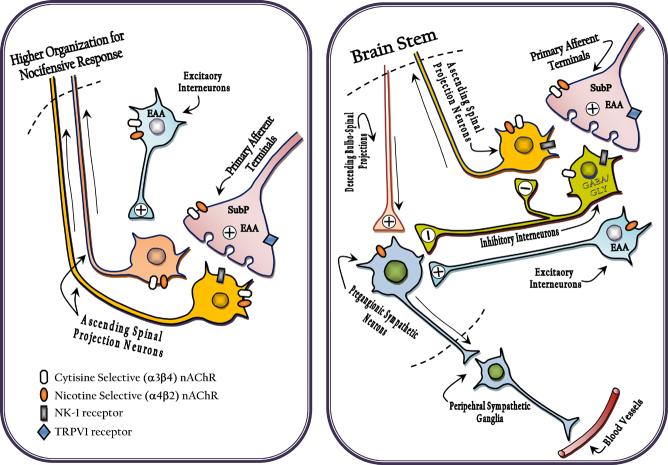Figure 7.
Proposed organization of dorsal horn circuitry underlying nocifensive behavior (left and cardiovascular response (right) evoked by local intrathecal cytisine (acting though primarily α3β4) and nicotine (acting though primarily α4β2) receptors. The location of these subunits are hypothesized based on changes observed in the behavior after pretreatment with IT capsaicin (Khan et al., 2004), IT sP-SAP (present study) and spinal transection (Khan et al., 1994b).
Nocifensive behavior (left) : In brief, presynaptic receptor effects on TRPV1 (+) afferent terminals and post synaptic NK1(+) neurons leads to activation of spinofugal outflow to higher centers initiating organized nocifensive behaviors.
Cardiovascular (right) The block by spinal transfection of the effect of cytisine, but not nicotine, suggests respectively, a bulbospinal linakge and a local (direct or by excitatory interneurons ) activation of preganglionic interneurons. The enhanced effect of IT cytisine in sP-Sap treated rats may reflect the normal activation of local NK-1(+) bearing inhibitory(GABA-ergic) interneurons, which serve to regulate preganglionic outflow.

